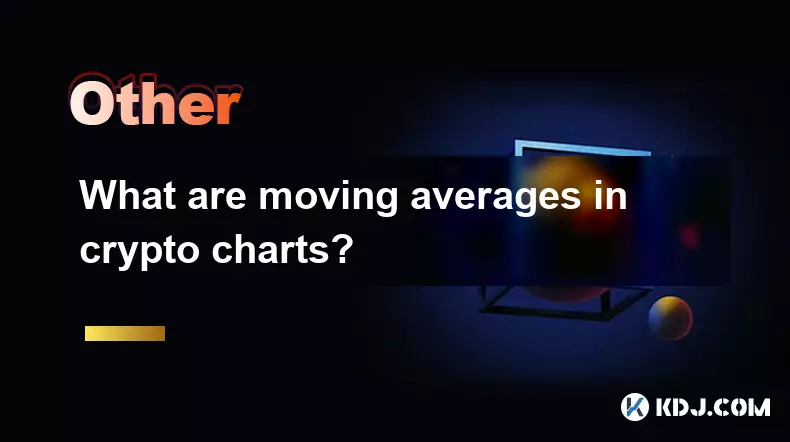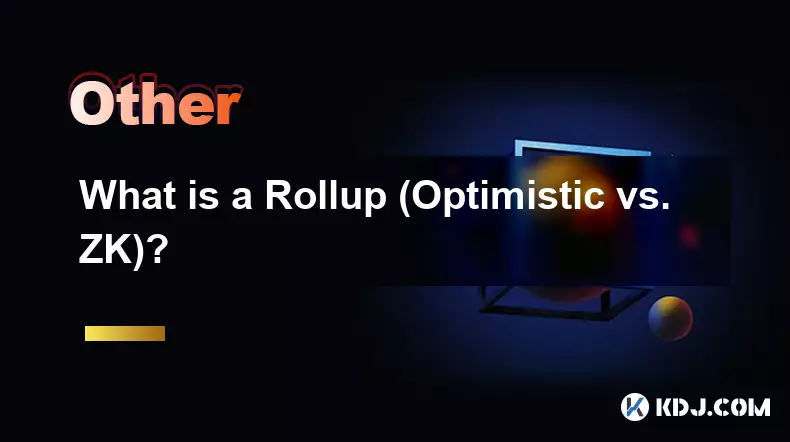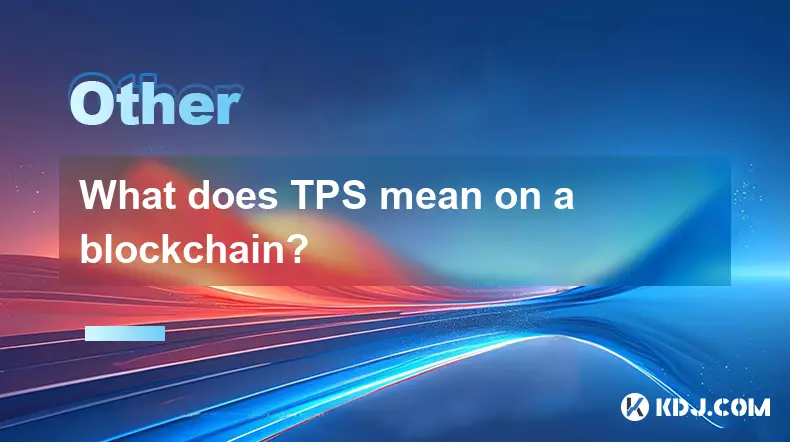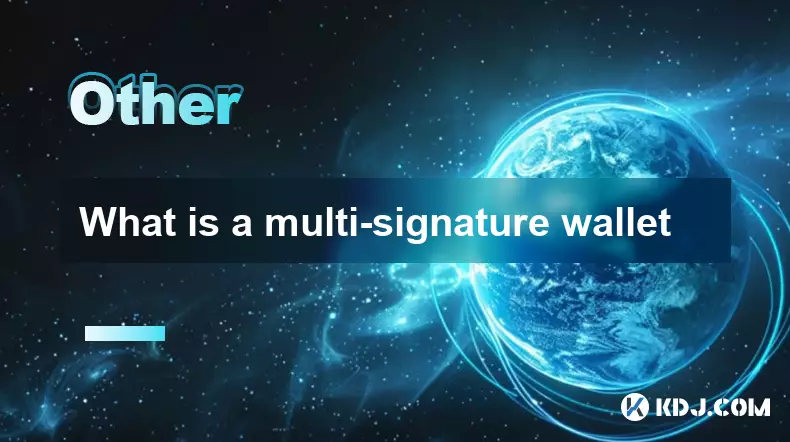-
 bitcoin
bitcoin $122288.232522 USD
0.16% -
 ethereum
ethereum $4480.662914 USD
-0.22% -
 xrp
xrp $2.962747 USD
-2.32% -
 tether
tether $1.000120 USD
-0.05% -
 bnb
bnb $1145.654223 USD
-2.07% -
 solana
solana $227.105217 USD
-1.67% -
 usd-coin
usd-coin $0.999548 USD
-0.02% -
 dogecoin
dogecoin $0.250875 USD
-2.04% -
 tron
tron $0.340654 USD
-0.49% -
 cardano
cardano $0.837968 USD
-2.52% -
 hyperliquid
hyperliquid $48.960449 USD
0.06% -
 chainlink
chainlink $22.049280 USD
-1.33% -
 ethena-usde
ethena-usde $1.000404 USD
0.02% -
 sui
sui $3.586212 USD
0.20% -
 avalanche
avalanche $29.894916 USD
-4.18%
What are moving averages in crypto charts?
Moving averages help crypto traders identify trends by smoothing price data, with SMAs offering stability and EMAs providing quicker signals for timely decisions.
Sep 01, 2025 at 05:19 pm

Moving Averages in Cryptocurrency Trading
1. Moving averages are among the most widely used technical indicators in cryptocurrency trading. They help traders smooth out price data over a specific time period to identify trends more clearly. By calculating the average price of an asset across defined intervals, moving averages filter out short-term volatility that can mislead analysis. This clarity allows investors to make decisions based on broader market momentum rather than reacting to every price fluctuation.
2. There are two primary types of moving averages used in crypto charts: Simple Moving Average (SMA) and Exponential Moving Average (EMA). The SMA is calculated by summing up recent closing prices and dividing that figure by the number of time periods in the calculation. For example, a 10-day SMA adds the closing prices for the last 10 days and divides the total by 10. The EMA, on the other hand, applies more weight to recent prices, making it more responsive to new information and sudden market shifts.
3. Traders use different time frames depending on their strategy. Short-term traders might focus on 9-day or 20-day moving averages, while long-term investors often analyze 50-day or 200-day averages. These time frames help determine whether a cryptocurrency is in an uptrend or downtrend. When the price stays above a key moving average, it's generally seen as bullish. Conversely, a price below the moving average may signal bearish sentiment.
How Moving Averages Signal Market Trends
1. One of the core functions of moving averages is to identify trend direction. When the price of a cryptocurrency consistently trades above its moving average line, it indicates upward momentum. A sustained position below the line suggests downward pressure. This visual representation helps traders avoid emotional decisions during volatile market swings.
2. Crossovers are commonly used signals derived from moving averages. A 'golden cross' occurs when a short-term moving average crosses above a long-term moving average, such as the 50-day crossing over the 200-day. This event is interpreted as a strong buy signal. The opposite, known as a 'death cross,' happens when the short-term average drops below the long-term one, often prompting traders to consider selling or shorting the asset.
3. Golden and death crosses have historically preceded major market movements in assets like Bitcoin and Ethereum, making them critical reference points for technical analysts. These signals are not foolproof but gain credibility when confirmed by trading volume and other indicators like RSI or MACD.
4. Moving averages also act as dynamic support and resistance levels. In an uptrend, the moving average can serve as a support zone where prices bounce back up. During a downtrend, the same line may become resistance, capping rallies. Traders watch for price reactions near these levels to time entries and exits.
Combining Moving Averages with Other Tools
1. Relying solely on moving averages can lead to false signals, especially in sideways or choppy markets. To improve accuracy, traders combine them with volume analysis, trendlines, and oscillators. For instance, if a golden cross occurs alongside a spike in trading volume, the signal gains more validity.
2. The Moving Average Convergence Divergence (MACD) indicator is built using EMAs and provides insights into momentum and trend strength. It plots the difference between a short-term EMA and a longer-term EMA, along with a signal line that is itself a moving average of this difference. This creates actionable buy and sell cues based on convergence and divergence patterns.
3. Bollinger Bands often incorporate moving averages at their center. The middle band is typically a 20-day SMA, with upper and lower bands representing standard deviations from that average. When prices touch or breach the bands in conjunction with moving average trends, it can indicate overbought or oversold conditions.
4. Using multiple moving averages together, such as plotting both 50-day and 200-day lines on the same chart, enhances the ability to spot trend changes and confirm ongoing momentum. This multi-layered approach reduces the risk of acting on misleading data.
Frequently Asked Questions
What is the difference between SMA and EMA in crypto trading?The Simple Moving Average (SMA) treats all data points equally, providing a smooth but delayed view of price trends. The Exponential Moving Average (EMA) gives more weight to recent prices, making it more sensitive to new market information. In fast-moving crypto markets, EMA is often preferred for its responsiveness.
Can moving averages predict exact price levels?No, moving averages do not predict precise price points. They help identify the general direction of the trend and potential support or resistance zones. Traders use them in conjunction with other tools to estimate likely price behavior, not exact future values.
Why do some traders use the 200-day moving average as a key indicator?The 200-day moving average is widely watched because it reflects long-term market sentiment. In crypto, staying above this average often signifies a healthy bull market, while falling below it can indicate a bearish shift. Its widespread use creates a self-fulfilling effect as many traders base decisions on it.
Are moving averages effective in sideways markets?Moving averages tend to underperform in range-bound or sideways markets where prices lack a clear trend. In such conditions, they may generate false signals due to frequent crossovers. Traders often switch to volatility-based indicators or wait for breakout confirmation before relying on moving averages.
Disclaimer:info@kdj.com
The information provided is not trading advice. kdj.com does not assume any responsibility for any investments made based on the information provided in this article. Cryptocurrencies are highly volatile and it is highly recommended that you invest with caution after thorough research!
If you believe that the content used on this website infringes your copyright, please contact us immediately (info@kdj.com) and we will delete it promptly.
- BlockDAG, DOGE, HYPE Sponsorship: Crypto Trends Shaping 2025
- 2025-10-01 00:25:13
- Deutsche Börse and Circle: A StableCoin Adoption Powerhouse in Europe
- 2025-10-01 00:25:13
- BlockDAG's Presale Buzz: Is It the Crypto to Watch in October 2025?
- 2025-10-01 00:30:13
- Bitcoin, Crypto, and IQ: When Genius Meets Digital Gold?
- 2025-10-01 00:30:13
- Stablecoins, American Innovation, and Wallet Tokens: The Next Frontier
- 2025-10-01 00:35:12
- NBU, Coins, and Crypto in Ukraine: A New Yorker's Take
- 2025-10-01 00:45:14
Related knowledge

What is a token economy?
Sep 20,2025 at 12:18am
Understanding the Foundations of a Token Economy1. A token economy in the context of cryptocurrency refers to a system where digital tokens are used a...

What are suitable application scenarios for blockchain?
Sep 20,2025 at 03:19am
Decentralized Finance (DeFi) Platforms1. Blockchain enables the creation of financial services without centralized intermediaries, allowing users to l...

What is a Rollup (Optimistic vs. ZK)?
Sep 22,2025 at 03:00pm
Understanding Rollups in Blockchain Technology1. Rollups are layer-2 scaling solutions designed to increase transaction throughput on blockchains like...

What is blockchain scalability?
Sep 19,2025 at 06:18am
Understanding Blockchain Scalability1. Blockchain scalability refers to a network's ability to handle an increasing number of transactions without com...

What does TPS mean on a blockchain?
Sep 21,2025 at 09:54am
Understanding TPS in Blockchain Technology1. TPS stands for Transactions Per Second, a metric used to measure the number of transactions a blockchain ...

What is a multi-signature wallet
Sep 20,2025 at 07:00am
Understanding Multi-Signature Wallets in Cryptocurrency1. A multi-signature wallet, often referred to as a multisig wallet, is a type of cryptocurrenc...

What is a token economy?
Sep 20,2025 at 12:18am
Understanding the Foundations of a Token Economy1. A token economy in the context of cryptocurrency refers to a system where digital tokens are used a...

What are suitable application scenarios for blockchain?
Sep 20,2025 at 03:19am
Decentralized Finance (DeFi) Platforms1. Blockchain enables the creation of financial services without centralized intermediaries, allowing users to l...

What is a Rollup (Optimistic vs. ZK)?
Sep 22,2025 at 03:00pm
Understanding Rollups in Blockchain Technology1. Rollups are layer-2 scaling solutions designed to increase transaction throughput on blockchains like...

What is blockchain scalability?
Sep 19,2025 at 06:18am
Understanding Blockchain Scalability1. Blockchain scalability refers to a network's ability to handle an increasing number of transactions without com...

What does TPS mean on a blockchain?
Sep 21,2025 at 09:54am
Understanding TPS in Blockchain Technology1. TPS stands for Transactions Per Second, a metric used to measure the number of transactions a blockchain ...

What is a multi-signature wallet
Sep 20,2025 at 07:00am
Understanding Multi-Signature Wallets in Cryptocurrency1. A multi-signature wallet, often referred to as a multisig wallet, is a type of cryptocurrenc...
See all articles










































































